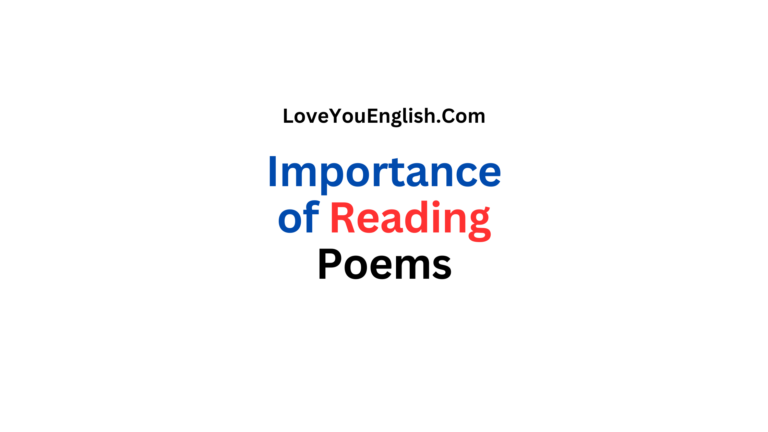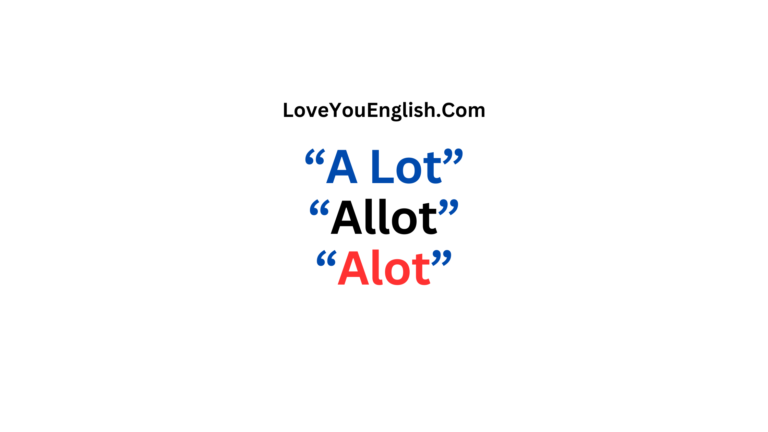Figurative Language in English And How to Use Them
Figurative Language in English And How to Use Them
Hello everyone,
Do you want to boost your English skills?
A study in the Journal of Cognitive Neuroscience says that metaphors, which are a type of figurative language, can make your words more interesting and emotional.
If you want to captivate your audience, write impressive cover letters, and inspire others, then learning how to use figurative language is important.
This lesson will help you understand these important language tools.
Keep reading for examples, explanations, and tips to make your writing stand out.
What is figurative language?
Figurative language is when words or phrases are used in a way that goes beyond their literal meaning.
Instead of just stating facts, figurative language uses comparisons, symbolism, and other techniques to create vivid images, evoke emotions, or convey deeper messages.
It helps make language more interesting and allows writers and speakers to express complex ideas in a more colorful and captivating way.
Importance and purpose of figurative language in communication and literature:
Making Ideas Easier to Understand: Figurative language helps us understand complex ideas by presenting them in familiar or creative ways.
It connects abstract concepts to things we can see or relate to, making it easier for readers or listeners to grasp them.
Creating Clear Pictures:
Writers use similes, metaphors, and other figurative devices to paint vivid images in our minds.
This helps us imagine what they’re describing and makes their descriptions more memorable and powerful.
Bringing Out Emotions:
Figurative language has the ability to make us feel emotions and set the mood.
Writers use it to express love, joy, sadness, or fear, so we can connect with the characters and situations on a deeper level.
Adding Layers of Meaning:
Figurative language adds depth to a text and allows for different interpretations.
It can convey hidden meanings, symbolism, or themes that go beyond the literal words.
Getting Our Attention:
Figurative language grabs our attention by presenting ideas in fresh and imaginative ways.
It makes the communication more interesting and enjoyable, adding beauty to the language.
Cultural and Literary Importance:
Figurative language is an important part of literature across different cultures and time periods.
It contributes to the richness and diversity of literary traditions, making it a key element in poetry, prose, drama, and other forms of writing.
Simile:
A simile is a way to compare two different things by using the words “like” or “as.”
It helps us understand things better or make them more vivid.
For example:
- “Her eyes were shining like diamonds.”
- “He runs as fast as a cheetah.”
- “The night was as dark as coal.”
Similes use “like” or “as” to show the comparison between the two things.
This helps us imagine things more clearly or describe their qualities by comparing them to something else.
Metaphor:
A metaphor is a way of comparing two things directly, without using the words “like” or “as.”
It’s like saying one thing is another thing.
Metaphors are used to explain complicated ideas or feelings by connecting things that seem unrelated.
For example, saying “Time is a thief” means that time can steal things from us.
Or when someone says “The world is a stage,” they mean that life is like a play.
Metaphors help us understand things better by showing us how they are similar to something else.
Personification:
Personification is when you give human qualities to things that aren’t human.
This helps make them more relatable and easier to understand.
For example, saying “the wind whispered” or “the stars danced” is using personification to make non-human things seem more alive and relatable.
It’s like giving emotions or behaviors to objects or ideas to help paint a clearer picture in the reader’s mind.
Hyperbole
Hyperbole is a fancy way of saying that people sometimes exaggerate to make a point or be funny.
It’s like stretching the truth so much that it becomes really obvious that it’s not true.
Here are some examples:
– “I’ve told you a million times.” (Obviously, they didn’t actually say it a million times.)
– “This bag weighs a ton.” (The bag is definitely not as heavy as a ton.)
– “I’m so hungry I could eat a horse.” (They’re not really going to eat a whole horse, they’re just really, really hungry.)
So, when someone uses hyperbole, they’re not being serious.
They’re just trying to make a point, make people laugh, or add some excitement to the conversation.
Symbolism
Symbols are like secret codes that represent big ideas or feelings.
They can be things, actions, or even words that have a deeper meaning than what they actually are.
For example, a dove can stand for peace, a heart can stand for love, and a snake can stand for deceit or evil.
Symbols are used a lot in books, art, and everyday conversations to make things more meaningful.
They help writers and artists show complicated ideas or make us feel strong emotions without saying them directly.
In a poem, a rose might mean beauty and love, while a tree without leaves might mean loneliness or sadness.
Alliteration
Alliteration is when words or syllables next to each other start with the same consonant sound.
It’s used to make things sound nice, like in poems or songs, or to help us remember things better.
For example, “Peter Piper picked a peck of pickled peppers” or “She sells seashells by the seashore.”
Another example is “The big, blue balloon bounced.”
Alliteration makes the words stand out and adds a special touch to the writing.
Onomatopoeia:
Onomatopoeia is a fancy way of saying that some words sound like the noises they represent.
It’s like when you say “buzz” for the sound a bee makes, or “crash” for the sound of something breaking.
These words make it easier for us to imagine the sounds in our heads.
Other examples are “moo” for the sound a cow makes, “hiss” for the sound a snake makes, and “bang” for a loud noise.
Use of words that imitate the sound they describe:
People use onomatopoeic words a lot in books, poems, comics, and everyday conversations.
They help to make the story or description more interesting and real.
When writers use onomatopoeia, it’s like they’re painting a picture with sounds.
It helps us to hear the sounds in our minds and makes the story more exciting.
Irony:
Irony is a fancy way of saying that something happens in a way that is different from what you would expect.
It’s like when someone says something but means the opposite, or when a situation turns out the opposite of what you thought would happen.
There are different types of irony, like when someone says something sarcastic or funny, or when a situation turns out completely different from what you expected.
For example, if someone says “What a beautiful day!” during a thunderstorm, that’s verbal irony because they don’t really mean it.
And if a fire station burns down, that’s situational irony because you would expect a fire station to be safe from fire.
Dramatic irony is when the audience or reader knows something that the characters don’t, which makes things really tense or exciting.
It happens a lot in books and plays.
Irony is a super strong tool that authors, filmmakers, actors, and even regular people use to say something that means the opposite of what it seems.
It’s like a secret code that makes things more complicated and confusing, making us think hard about what the real message or idea is.
Oxymoron:
An oxymoron is a fancy way of saying that two opposite things are put together to make a point.
It might seem weird, but it’s actually used to make things more important, show contradictions, or explain complicated ideas in a short way.
Some examples of oxymorons are “jumbo shrimp,” “bittersweet,” “deafening silence,” “living dead,” and “dark light.”
These phrases mix words with opposite meanings, which makes people think about the tension or irony in what’s being said.
People use oxymorons a lot in books, poems, ads, and everyday talk to make things seem strange or confusing.
By putting opposite words together, writers can make people curious, challenge what they think is true, or show that life is complicated.
Oxymorons make people stop and think about what they thought they knew, and they make people think about how words and ideas can be tricky.
Let’s explore the different ways figurative language can be used:
Creating Vivid Images:
Figurative language, like similes, metaphors, and personification, helps to make mental pictures more colorful by comparing things to something else.
By using descriptive words that appeal to our senses, figurative language helps us imagine scenes more clearly.
For example, in the metaphor “The world is a stage,” Shakespeare paints a clear picture of life as a play, helping readers understand the complexities of human life better.
Adding Layers and Depth to Writing:
Figurative language adds more meaning to writing than just the literal words.
It lets writers express abstract ideas, emotions, and experiences in a more interesting way.
By using symbols, irony, and other figurative tools, writers can explore deep themes and issues in their work.
For example, in George Orwell’s “Animal Farm,” the use of animals to represent political ideologies adds depth to the story, allowing readers to think about the deeper message.
Using descriptive language can make readers feel a lot of different emotions and create a certain mood.
Writers can do this by using words and phrases that make readers imagine specific feelings or atmospheres.
For example, in Edgar Allan Poe’s “The Raven,” he uses dark and scary words to make readers feel worried and sad. This makes readers have a strong emotional reaction.
Figurative language also helps explain complicated ideas by comparing them to things we already know. Metaphors and analogies are really good at doing this.
For example, in William Shakespeare’s “Sonnet 73,” he describes time as “a thief.”
This helps us understand the abstract idea of time passing and how it affects our lives.
Creating Memorable and Vivid Descriptions:
Figurative language makes writing more interesting by using imaginative and creative words to create descriptions that stay in the reader’s mind.
It captures the reader’s attention and leaves a lasting impression.
For example, in J.K. Rowling’s “Harry Potter” series, she uses vivid imagery and sensory details to bring the magical world of Hogwarts to life.
This makes reading the books a memorable and immersive experience.
Famous quotes and parts of books:
This is when figurative language is used in well-known books, like novels, poems, plays, and essays.
Famous quotes and parts of books are often great examples of how figurative language can be used to convey meaning, create images, and evoke emotions.
For instance, Shakespeare’s plays are full of metaphors, similes, and other types of figurative language.
Quotes like “All the world’s a stage” from “As You Like It” or “To be or not to be, that is the question” from “Hamlet” are famous examples of metaphors and deep thinking.
Figurative language is not just found in books; it’s all around us in things like songs, ads, and everyday talks.
When musicians sing, they often use metaphors, similes, and other figurative tricks to show feelings, tell stories, or make pictures in our minds.
Take the song “Like a Rolling Stone” by Bob Dylan, for instance.
The line “Like a rolling stone” is a simile that makes us feel lost and unstable.
Ads also love to use figurative language to catch our attention, make us want things, and convince us to buy stuff.
Phrases like “Melts in your mouth, not in your hands” (M&M’s) use words that make us imagine how great the product is.
Even when we’re just chatting with friends, we often use figurative language to express ourselves in a more fun or colorful way.
Saying “He’s as stubborn as a mule” or “She has a heart of gold” are examples of similes and metaphors we use all the time to describe someone’s personality or behavior.
Let’s explore each point in more detail:
Recap of why figurative language is important and versatile:
– Figurative language is really important in both communication and literature because it adds depth, nuance, and vividness to our language.
– It helps writers express complex ideas and emotions in a more interesting and memorable way.
– Writers can use different types of figurative language like similes, metaphors, personification, and symbolism to create colorful mental pictures, evoke strong feelings, and add layers of meaning to their writing.
– Figurative language isn’t just limited to books and stories, it’s also used in everyday language like conversations, advertisements, songs, and speeches.
– Its versatility means that it’s a crucial part of how people express themselves across different cultures and throughout history.
Learning about figurative language can help you understand stories better and become a better writer yourself.
When you pay attention to how authors use figurative language, you can discover more meanings and insights about the characters and themes in the text.
Plus, using figurative language in everyday conversations can make your talks more interesting and meaningful.
It’s important to recognize and understand figurative expressions because it can help you connect with others, be more creative, and communicate effectively.
So, exploring figurative language in different situations can make you think critically and appreciate different cultures.
Each culture has its own unique way of using figurative language, and by learning about these differences, you can have a broader view of the world and understand other people better.
In the end, figurative language is a powerful tool that enriches both literature and everyday communication.
By exploring its many forms and applications, you can have a deeper love for language and its ability to convey complex ideas and emotions.







